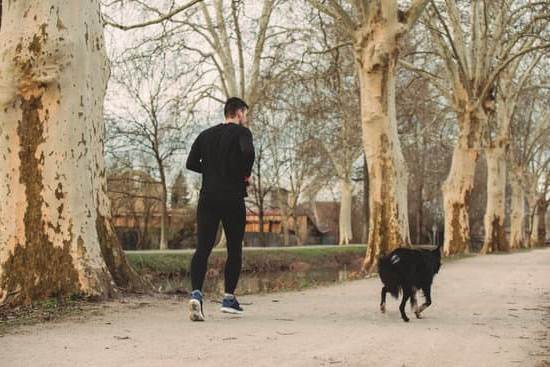Do you find it frustrating when your dog constantly jumps on the couch? If so, you’re not alone. Many dog owners struggle with this behavior, but luckily, there are effective ways to address it. In this article, we will delve into the topic of training your dog not to jump on the couch and provide you with practical tips and techniques to help you establish boundaries.
Allowing your dog free rein on the couch may seem harmless at first, but it can have negative consequences. Not only can it lead to wear and tear on your furniture, but it can also create confusion regarding hierarchy and boundaries within your household. By teaching your dog to stay off the couch, you are establishing yourself as the pack leader and setting clear expectations for their behavior.
The key is proper training. Just like any other command or skill, teaching your dog not to jump on the couch requires consistent effort and patience. In this article, we will break down the psychology behind this behavior, discuss basic obedience training as a foundation for success, explore positive reinforcement techniques, and provide strategies for consistency in setting and enforcing rules. Additionally, we will address specific issues such as separation anxiety and hyperactivity that may contribute to couch jumping.
By following the steps outlined in this article and remaining consistent in your training efforts, you will be able to teach your dog not to jump on the couch successfully. Remember, every setback is an opportunity for growth – so don’t get discouraged if there are relapses along the way. With dedication and patience, both you and your beloved furry friend can enjoy a harmonious home where furniture remains intact.
The Psychology Behind Your Dog’s Couch Jumping Behavior
Dogs are often inclined to jump on couches for various reasons, and understanding the psychology behind this behavior can help in effectively training them to stay off the furniture. One reason dogs engage in couch jumping is due to instinctual and behavioral factors. For instance, dogs have a natural desire to be part of a pack and seek comfort and security. The couch, with its soft cushions and proximity to their human companions, provides that sense of security.
Additionally, dogs may jump on couches as a way of marking their territory or claiming a comfortable spot. By leaving their scent on the couch through jumping or rubbing against it, they are asserting ownership over the space. This behavior can also be reinforced by past rewards or attention received from their owners when they jumped on the couch.
To address this behavior, it is essential to establish a strong foundation of basic obedience training. Teaching commands such as “sit” and “stay” will enable you to control your dog’s impulses and redirect their behavior away from jumping on the couch. These commands should be consistently reinforced through positive reinforcement techniques like treats and praise.
It’s important to keep in mind that dogs thrive when given mental and physical stimulation. Boredom or lack of exercise can contribute to undesirable behaviors such as jumping on the couch out of excess energy or frustration. Providing alternative activities like puzzle toys, interactive games, or taking your dog for regular walks can help redirect their energy in more appropriate ways.
Understanding why dogs jump on couches helps us devise effective training strategies to discourage this behavior. Establishing obedience training, providing mental and physical stimulation, and implementing consistent rules can go a long way in teaching your dog not to jump on the couch. By addressing both the underlying causes and redirecting their behavior towards more acceptable alternatives, you will create an environment where your dog understands the boundaries while still feeling loved and secure.
Establishing a Strong Foundation
To effectively train your dog not to jump on the couch, establishing a strong foundation of basic obedience training is crucial. Basic obedience commands such as “sit” and “stay” are essential tools that will help you establish boundaries and reinforce the desired behavior in your dog. Here are some tips and techniques for successfully teaching these commands:
Start with simple commands
Begin by teaching your dog basic commands like “sit” and “stay.” These commands form the foundation of obedience training and will be useful in redirecting your dog’s behavior away from jumping on the couch.
Use positive reinforcement
Positive reinforcement is an effective training method where you reward your dog for exhibiting the desired behavior. When teaching “sit,” for example, use treats or praise to reward your dog every time they sit on command. This positive association will encourage them to repeat the behavior.
Consistency is key
Consistency is crucial when training your dog. Use the same verbal cues and hand signals consistently so that they can understand and build associations with specific commands. Additionally, ensure that everyone in the household follows the same rules and uses consistent commands to avoid confusion.
Short training sessions
Keep training sessions short but frequent to maintain engagement and prevent overstimulation or exhaustion. Aim for several 5-10 minute sessions throughout the day rather than one long session.
Patiently reinforce behaviors
It’s important to be patient when teaching basic obedience commands. Some dogs may grasp them quickly, while others may take longer to learn. Stay calm, consistent, and persistent in reinforcing behaviors until they become reliable.
Remember, basic obedience training sets a strong foundation for more advanced training techniques later on in addressing couch jumping behavior. By teaching your dog fundamental obedience commands such as “sit” and “stay,” you are laying the groundwork for effective couch training and establishing clear boundaries with your furry companion.
Positive Reinforcement
In order to successfully train your dog not to jump on the couch, it is important to utilize positive reinforcement techniques. Positive reinforcement training involves using rewards and consequences to encourage or discourage certain behaviors. By associating the act of jumping on the couch with negative consequences, you can effectively deter your dog from engaging in this behavior.
One effective technique for negative association is redirecting your dog’s attention away from the couch whenever they attempt to jump on it. This can be done by immediately giving them a command such as “off” or “down,” and then redirecting their attention to another activity or area of the house where they are allowed.
Be sure to praise and reward your dog when they comply with the command, reinforcing the idea that staying off the couch leads to positive outcomes.
Additionally, you can create an unpleasant experience for your dog if they persistently jump on the couch. For example, you may place a harmless but uncomfortable deterrent on the cushions, such as aluminum foil or double-sided tape. When your dog jumps up and feels these unpleasant sensations, they will start associating couches with discomfort and eventually learn to avoid them.
Consistency is key when utilizing positive reinforcement techniques. It is important that all members of your household enforce the same rules regarding couch access for your dog. Any inconsistency in enforcing consequences can confuse your furry friend and undermine their training progress. Therefore, be sure everyone understands and follows through with providing consistent consequences when necessary.
By employing positive reinforcement techniques consistently, you will help train your dog to associate jumping on the couch with negative consequences. This will ultimately result in them learning to stay off the couch altogether while fostering a deeper understanding of boundaries within their environment.
Consistency Is Key
Consistency is a crucial aspect when it comes to training your dog not to jump on the couch. Dogs thrive on routine and clear boundaries, so it’s important to establish and enforce consistent rules regarding couch access. By setting and maintaining these clear rules, you can effectively communicate your expectations and promote positive behavior in your dog.
The Importance of Consistency
Consistency is essential in training because dogs learn through repetition and reinforcement. When the rules are consistently enforced, your dog will understand what is expected of them and what behaviors are not acceptable. Inconsistencies in enforcing these rules can lead to confusion for your dog, making it harder for them to understand and comply with your commands.
Strategies for Establishing Clear Rules
To set clear rules regarding couch access, start by defining the areas where your dog is allowed and not allowed to go. Use verbal cues such as “off” or “no couch” along with hand gestures to reinforce this boundary consistently. Be firm but fair in preventing your dog from accessing the couch when they try to jump up.
Consistency also involves ensuring that everyone in the household follows the same rules. If some family members allow the dog on the couch while others don’t, it can confuse and frustrate your furry friend. Make sure everyone understands and agrees on the established boundaries.
Enforcing the Rules
Enforcing clear rules requires vigilance and patience. Whenever you catch your dog attempting to jump on the couch, calmly say “off” or use another predetermined command, gently guide them off the couch, and direct them towards an appropriate spot such as their designated bed or mat. Praise them when they obey your command and reward them with treats or praise for staying off the couch.
It’s important not to get frustrated or lose patience if your dog doesn’t immediately comply with the rules. Consistency takes time, and your dog may test the boundaries from time to time. Stay calm, continue to reinforce the rules consistently, and remember that training is a process that requires patience and persistence.
By setting and enforcing clear rules consistently, you can help your dog understand what behavior is expected of them regarding couch access. Consistency lays the foundation for effective training and ensures long-term success in keeping your dog off the couch.
Redirecting Your Dog’s Energy and Attention
One important aspect of training your dog not to jump on the couch is redirecting their energy and attention through cognitive and physical stimulation. Dogs have a natural need for mental and physical exercise, and providing them with appropriate outlets for these needs can significantly reduce their propensity to engage in undesired behaviors like jumping on furniture.
To effectively redirect your dog’s energy, it is essential to engage them in activities that stimulate their mind. Mental exercise can involve puzzle toys, interactive games, or obedience training sessions. These activities not only keep your dog mentally engaged but also help build focus and impulse control. Teaching new commands or tricks can be an excellent way to challenge your dog’s cognitive abilities and tire them out mentally.
In addition to mental stimulation, it is equally important to provide your dog with ample opportunities for physical exercise. Regular physical activity helps release pent-up energy, relieves boredom, and promotes good overall health. Depending on your dog’s breed and individual needs, activities such as brisk walks, jogging, playing fetch, or visiting a dog park can be beneficial. Incorporating a mix of aerobic exercise (to increase heart rate) and anaerobic exercise (to build strength) is ideal.
By focusing on cognitive and physical stimulation, you are diverting your dog’s energy away from couch-jumping behavior towards healthier outlets. However, remember that every dog is unique, so it may take some trial-and-error to find the activities that resonate best with your furry friend.
Creating a Safe and Comfortable Space for Your Dog
Recommend a Cozy and Designated Spot
One effective strategy to discourage your dog from jumping on the couch is to provide them with a cozy and designated spot of their own. This can be a comfortable pet bed, a designated area in the house, or even a crate if your dog feels secure there. By giving your dog their own space, you are providing them with an alternative option to relax and feel safe without resorting to the couch.
When choosing the appropriate spot for your dog, consider their preferences. Some dogs may prefer a quiet corner in the living room, while others may like being closer to family activities. Observe where your dog naturally likes to spend time, and try placing their bed or creating their space there.
Make the Space Inviting
To encourage your dog to stay off the couch and enjoy their designated spot, it’s essential to make it inviting for them. Add some soft blankets or pillows that they can snuggle up on, making sure they are washable in case of accidents or shedding. Consider placing some of their favorite toys near the area or draping one of your unwashed shirts over their bed so they can feel close to you.
Additionally, ensure that the temperature in this space is comfortable for your dog. Make sure it’s not too drafty or overly warm by positioning it away from direct air vents or heaters. Providing a cozy environment will make this space more appealing and increase the chances of your furry friend choosing it over the couch.
Praise and Reward Your Dog for Using Their Space
Once you have created a safe and comfortable space for your dog, reinforce positive behavior by praising and rewarding them whenever they choose to use it instead of jumping on the couch. Use enthusiastic verbal praise such as “Good job.” or “Well done.”, coupled with treats or affectionate pats on their head or back. This positive reinforcement will help your dog associate their designated spot with good things and make it more likely for them to continue using it.
Remember, consistency is key when training your dog to stay off the couch, so be patient and persistent. With time and dedication, your furry companion will learn to find comfort in their designated spot, leaving the couch behind.
Addressing Specific Issues
Separation anxiety and hyperactivity are common issues that can contribute to a dog’s tendency to jump on the couch. Understanding these specific issues and addressing them appropriately is crucial in successfully training your dog to stay off the couch.
Separation anxiety occurs when a dog becomes distressed or anxious when separated from their owner. This can manifest as destructive behavior, excessive barking, and even jumping on furniture like the couch. It is important to address separation anxiety through patient and consistent training methods. Gradual desensitization exercises, where you gradually increase the time spent away from your dog, can help alleviate their anxiety.
Hyperactivity, on the other hand, refers to excessive energy levels and a lack of impulse control in dogs. A hyperactive dog may engage in constant jumping or running around, which can lead to them jumping on the couch as well. Regular exercise is key in managing hyperactivity. Ensuring that your dog gets enough physical activity will help tire them out and reduce their need for energetic behavior indoors.
In addition to regular exercise, mental stimulation is crucial for both separation anxiety and hyperactive dogs. Providing puzzle toys or engaging in interactive training sessions not only helps channel their energy but also helps keep their minds occupied and focused on appropriate activities.
Addressing these specific issues requires patience and consistency in training methods. Seeking professional help from a certified dog trainer or animal behaviorist may be necessary for severe cases or if you are unsure how to effectively manage these behaviors on your own.
By understanding the underlying causes of separation anxiety and hyperactivity in your dog, you can take proactive steps to address these issues while training them not to jump on the couch. With time, patience, and consistent training efforts, you can help your furry friend develop good habits and enjoy a comfortable space beside you without resorting to furniture jumping.
| Specific Issues | Training Techniques |
|---|---|
| Separation Anxiety | – Gradual desensitization exercises\n – Consistency and patience\n – Seeking professional help if needed |
| Hyperactivity | – Regular exercise\n – Mental stimulation (puzzle toys, interactive training)\n – Consistency in training methods\n – Professional assistance if necessary |
Troubleshooting
Dealing with relapses and maintaining progress in training your dog not to jump on the couch can be challenging, but it’s important to remember that setbacks are a normal part of the process. It’s crucial to stay patient and dedicated to the training routine you have established. Here are some solutions to common relapses and tips for maintaining a disciplined routine.
One common issue that may arise is your dog attempting to jump on the couch when you’re not at home or not paying attention. To address this, consider crate training or confining your dog to a designated area when you are away or unable to supervise. Provide your pet with plenty of toys and mental stimulation during these times to keep them occupied and distracted from the couch.
Another relapse scenario could involve guests or family members unintentionally reinforcing the jumping behavior by allowing your dog on the couch when you’re not around. To prevent this, communicate with everyone in your household about the importance of consistently enforcing the rules and boundaries set during training.
If relapses persist, it may be helpful to consult a professional dog trainer or animal behaviorist. They can provide personalized advice based on your particular circumstances and help address any underlying issues contributing to unwanted behaviors.
Maintaining progress requires consistency in both training techniques and daily routines. Remember to practice obedience commands regularly, rewarding your dog for following them correctly. Continue providing mental stimulation through interactive toys, puzzle games, and structured playtime sessions.
Lastly, be patient with yourself and your dog throughout this process. Training takes time, so don’t get discouraged if progress is slow or if there are occasional setbacks along the way. Stay consistent with your approach, celebrate small victories, and focus on building trust and strengthening the bond between you and your furry companion.
By troubleshooting relapses effectively and maintaining discipline in your routines, you can overcome challenges as they arise while making steady progress towards teaching your dog not to jump on the couch.
Conclusion
In conclusion, training your dog not to jump on the couch is a worthwhile endeavor that can have numerous benefits for both you and your furry companion. By understanding the negative impacts of allowing dogs on the couch and recognizing the underlying reasons for this behavior, you can establish clear boundaries through basic obedience training and positive reinforcement techniques.
Consistency in enforcing rules and redirecting your dog’s energy towards alternate activities is key in breaking the habit of couch jumping.
Creating a safe and comfortable space for your dog, such as a designated bed or area in the house, can also help reinforce the idea that staying off the couch is preferable. Additionally, addressing specific issues like separation anxiety and hyperactivity through appropriate training methods or seeking professional help if necessary will contribute to successfully curbing couch jumping tendencies.
While setbacks may occur during the training process, it’s important to maintain patience and continue with a disciplined routine. With time and consistency, you can achieve lasting progress in teaching your dog to stay off the couch.
The benefits of this training extend beyond an orderly living room; they include fostering a stronger bond with your pet, promoting their overall well-being, and establishing mutual respect between you and your dog. So embark on this journey armed with patience and persistence-the power of training your dog not to jump on the couch lies in your hands.
Frequently Asked Questions
How do I train my dog not to jump on the couch unless invited?
Training a dog not to jump on the couch unless invited requires consistency and positive reinforcement. Start by establishing a designated spot for your pet, such as a dog bed or mat, where they are allowed to relax. Whenever your dog tries to jump on the couch, firmly say “off” or use a similar command to indicate that it is not allowed.
Redirect their attention to their designated spot and reward them with treats or praise when they comply. Consistently reinforcing this behavior will help them understand that jumping on the couch is not acceptable unless they are invited.
How can I teach my dog to stop jumping?
To teach your dog to stop jumping altogether, it is important to address the underlying reason for their jumping behavior. Dogs often jump to seek attention or because they are excited. One effective method is to ignore the jumping behavior completely and withhold any attention until your dog has all four paws on the ground.
Fold your arms, turn away, and avoid eye contact when they jump up on you or others. Once your dog calms down and stops jumping, reward them with praise or a treat while reinforcing that calm behavior is what gets them attention. Consistency in this approach will teach them that jumping does not result in desired attention.
When walking your dog, it is important to reinforce good leash manners and prevent them from pulling on the leash excessively. One technique is called “stop-and-start,” where you stop walking whenever your dog pulls on the leash, waiting until there is slack before continuing again. This teaches them that pulling hinders progress while loose-leash walking allows movement forward.
Another useful method involves changing directions abruptly whenever your dog pulls, catching them off guard and redirecting their focus back towards you. Use treats or verbal praise as rewards for walking politely beside you without pulling.

Welcome to the blog! I am a professional dog trainer and have been working with dogs for many years. In this blog, I will be discussing various topics related to dog training, including tips, tricks, and advice. I hope you find this information helpful and informative. Thanks for reading!





